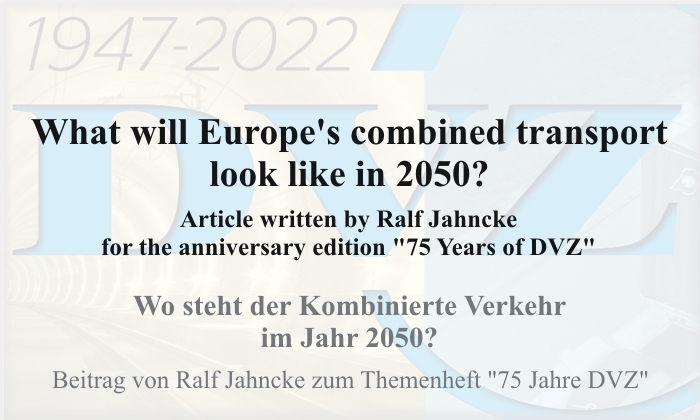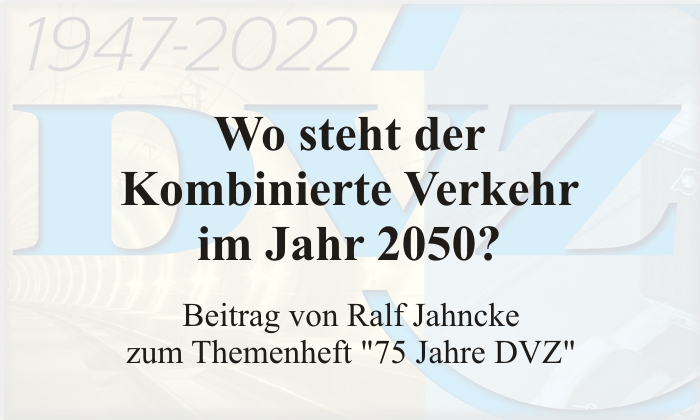
What will Europe’s combined transport look like in 2050?
Analysis of Ralf Jahncke, founder of TransCare, published in the anniversary edition “75 years of DVZ – Yesterday, today and tomorrow”
Summary by RAILMARKET
RAILMARKET – News – Business – What will Europe’s combined transport look like in 2050?
The year 2050 seems far away, to make a serious forecast. In Combined Transport (CT), however, a look 28 years ahead gives a clear result: if you look at the trend of the last 28 years and extrapolate it.
So what has happened in the combi market over the past decades? First of all: the slow death of general cargo. General cargo used to stand in the halls 24 hours a day and was, therefore, suitable for CT. But for the past 25 years, no one has been able to afford it anymore. So the market shifted to cargo transport and, with the tariff adjustments – coordinated internationally under the leadership of the UIRR – in the late 1980s and early 1990s to heavy, mostly liquid goods or steel. Profiteers were companies such as Rinnen, Hoyer, Bertschi, or Winner. System freight providers, on the other hand, the top dogs and limited partners in Kombiverkehr, were able to handle less and less volume via intermodal transport.
In the hinterland of the German seaports, about 800,000 TEU were still being transported in 1994. More than 90 percent of this was carried out by Deutsche Bahn with its subsidiary Transfracht. In 2022 Transfracht is still transporting a similarly high volume on the German market. With a market volume, today of around 4.4 million TEU the company’s share is only 18 percent.
There have also been significant shifts in continental traffic. While Hupac has increased its volume sevenfold in the past 28 years (assumption: zero growth in 2022 compared to 2021), Kombiverkehr has only grown to a limited extent and only internationally. Nationally, 40 percent less is driven today than in 1994. Many road haulers have left and/or set up their own combined transport systems.
If we extrapolate this development with the same absolute growth as in the past 28 years, the market would change as described in the table above. What do we learn from this? Those who integrate vertically, focus on block train lines, and/or think in networks grow – the rest lose market share or drop out.
Original German introduction and article:
Beitrag von Ralf Jahncke zum Themenheft “75 Jahre DVZ – Gestern, heute und morgen”
Wird Kombinierter Verkehr im Jahr 2050 ein anderes Wort für Güterverkehr auf der Schiene sein? Wie wird sich der Kombinierte Verkehr bis dahin entwickeln? Diesen Fragen geht Ralf Jahncke in seinem Beitrag zum Themenheft “75 Jahre DVZ – Gestern, heute und morgen” nach.
Der vollständige Artikel unter der Überschrift
Lies die Vergangenheit!
kann über den folgenden Bild-Link aufgerufen werden:

Aktuelle News der DVZ finden Sie unter www.dvz.de.
Contact:
Ralf Jahncke
TransCare GmbH
Phone: +49 (0) 611 7634 163
E-mail: r.jahncke@transcare.de
